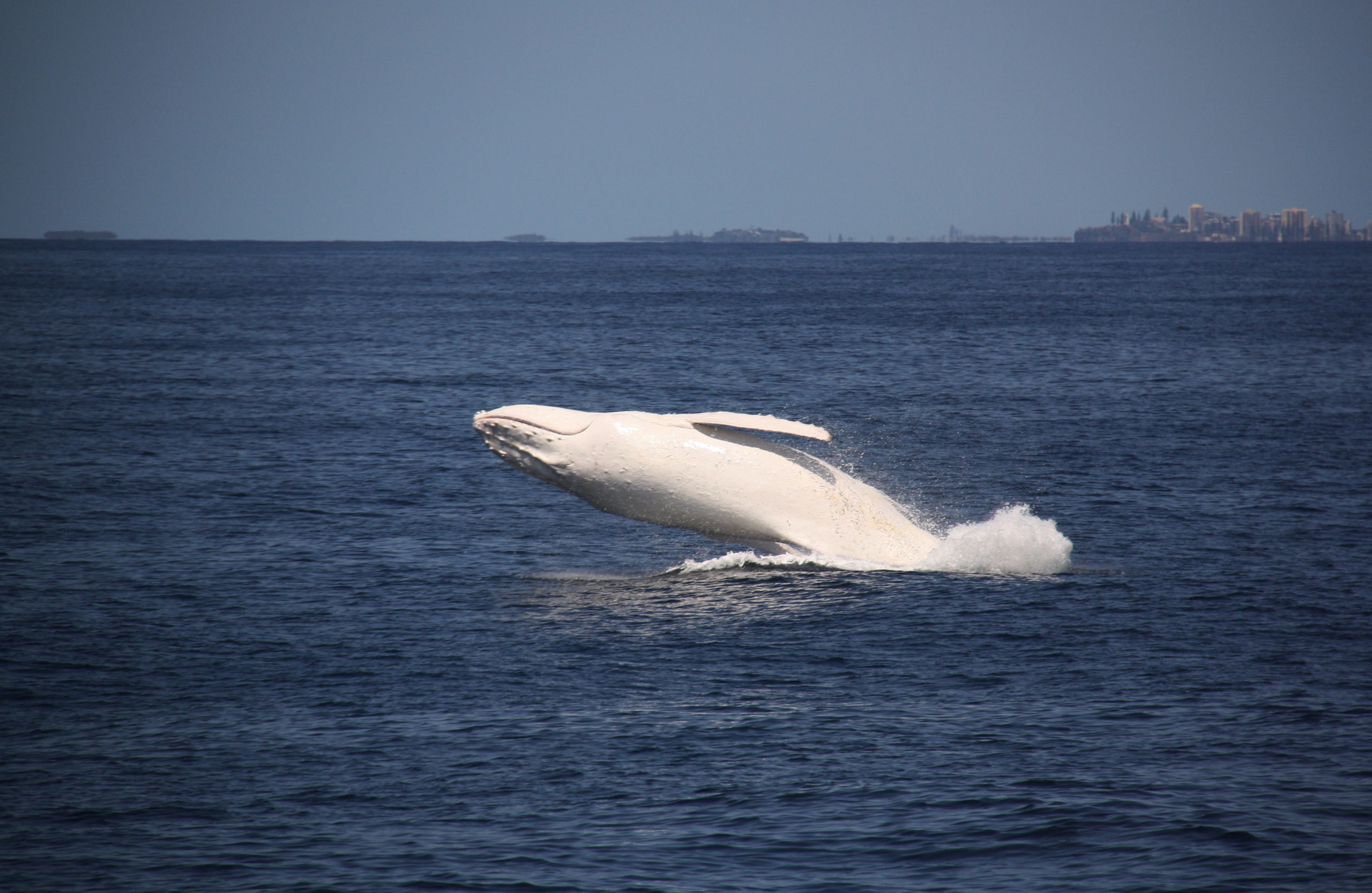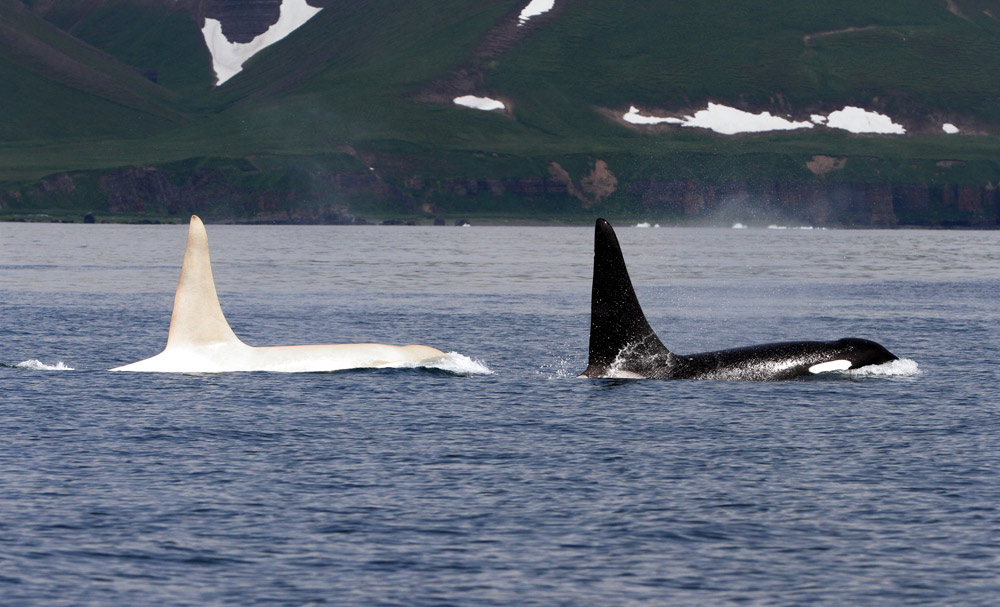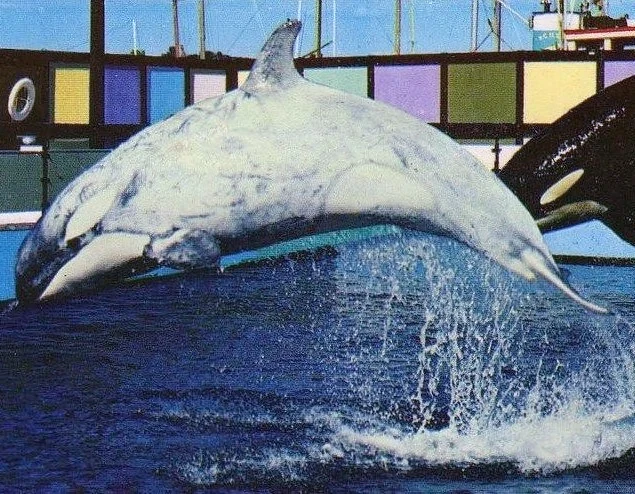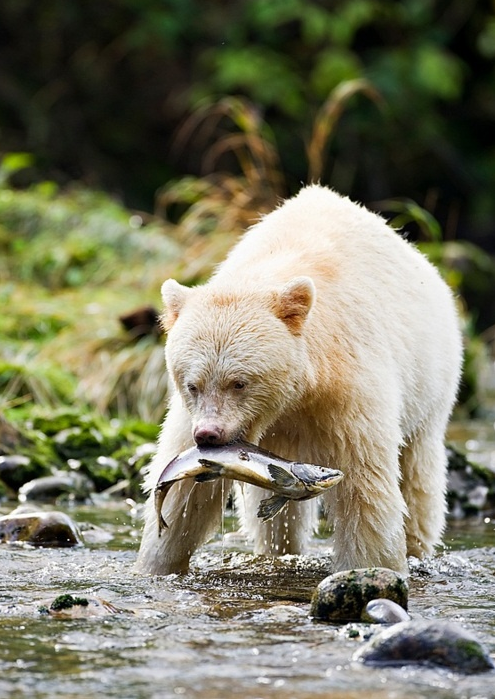Never has there been a more famous whale, real or imagined, than Moby Dick, the white sperm whale of literature who tormented an old sea captain. Captain Ahab swore to “chase that white whale on both sides of land, and over all sides of earth” until he caught him. Nowadays, scientists and whale enthusiasts are still enthralled by white whales quite apart from works of fiction.
Unlike Ahab, our aim is not to harpoon these enigmatic anomalies, but to photograph and study them. Animals that have no pigmentation, commonly referred to as albinos, are a source of fascination and wonder. In the case of the Kermode, or Spirit Bear of the northern BC coast, white animals have been intimately connected to First Nations culture and spiritualism. In humans, albinism has also been associated throughout history with superstition and stigma. But what makes some individuals of a population white? What is albinism, and how is it passed on? How many white whales are out there, and are they getting more common? In this blog, I’ll talk a bit about why some animals are born without colouration, and introduce you to some real-life white whales that poor old Ahab would have sailed to the end of the world to see.
The term ‘albinism’ or ‘albino’ is used to refer to a genetic condition that is seen in all vertebrates. It is a recessive trait, meaning an animal needs to inherit an albinism gene from both their mom and their dad in order to have the disease (except in some rare cases, but in biology there is always an exception to the rule). The all-white appearance associated with albinism is caused by a mutation of a gene that regulates the production of melanin, the pigment protein in your skin, hair and eyes. People with darker skin naturally produce more melanin than people with lighter skin, but people with albinism have trouble producing any melanin at all. Albinism is widespread in the animal kingdom. There have been recorded cases of albinism in many species of birds, reptiles, amphibians, and more rarely, in mammals. Sightings of albino mammals in the wild are rare and therefore pretty exciting. It is perhaps most spectacular in large mammals – white elephants , whales and bears have been a part of religious and cultural history wherever they are found.

Second to old Moby, the most famous white whale today is Migaloo, the albino humpback whale sighted each year off the eastern coast of Australia. Migaloo was first spotted in 1991, and his name is an aboriginal Australian word meaning ‘white fella’. The sight of a thirty-five foot humpback whale is a humbling one, but to see an animal that size that is completely white would be quite the shock! Despite his alarming colouration (or lack thereof), Migaloo seems to be in good condition, and has been seen consistently for the last twenty-five years. There is no evidence that his albinism affects his ability to survive, find food, or socialize with his fellow humpbacks.

Migaloo is not the only white whale making headlines in the last few years. In 2010, researchers on the Far East Russia Orca Project were gobsmacked to see the six-foot tall fin of a mature male killer whale break the surface. Killer whale dorsal fins are normally all black, but this enormous male was completely white! The male, aptly nicknamed Iceberg, was the first white male killer whale to be photographed in the wild. Since that discovery, there have been three other all-white killer whales spotted in the same population off the coast of Russia. While this likely means there is a genetic connection, researchers still haven’t confirmed whether Iceberg and his clan-mates’ rare colouration is due to albinism or some other condition. Four individuals in one population seems like a lot of albino whales, which leads to an important question: is albinism on the rise in killer whales, possibly due to inbreeding, or is it just because we are studying these animals more closely now that we’re seeing this for the first time?

Here in Victoria, there is another famous white whale in our recent history. Chimo (T4), a young female transient killer whale, was captured in BC waters and kept at Sealand of the Pacific, a former marine park off the Victoria waterfront. Chimo came to Sealand in 1970, and it was soon discovered that she suffered from a rare genetic disease called Chédiak-Higashi syndrome, which caused her to lose skin pigmentation. While not completely white like a typical albino, Chimo’s condition caused a form of albinism as well as a number of immune symptoms that caused her to die at an early age, in 1972. This sad story serves to remind us that not all albino animals are as happy and healthy as Migaloo – some types of albinism come with serious health complications, even in humans.

At this point, I should mention that not all white animals are albino. For instance, all belugas are white at maturity (they are more greyish when they’re young). Belugas are simply called ‘white whales’ by some. If albino belugas exist, we’d have a tough time spotting them! Many animals have what is called ‘colour morphs’, where individuals of the same species, even the same population, have different colouration based on genetics. Consider a litter of kittens, who may all have very different colour patterns based on the genes of their parents, grandparents, great-parents and so on. An all-white kitten is not necessarily an albino unless both parents carried an albino gene – it’s more likely just a normal cat that has all-white fur. A similar situation exists with Spirit Bears, the iconic white bears that inhabit the endangered coastal rainforests of British Columbia. Spirit bears, or Kermode bears, are a small subpopulation of black bear that have evolved over time to have an all-white colouration, but they are not albino, as many believe. Nevertheless, Kermode bears are a very rare and unique population that faces imminent extinction if logging and other human activities continue to threaten their old-growth forest home.
White animals, and especially white whales, have a special place in popular imagination. Their rarity and shocking appearance inspire awe and wonder, but also single them out and make them easy targets for exploitation. Moby Dick’s conspicuous colouring allowed Captain Ahab to mark him for bloody revenge. In real life today, Migaloo and other white whales are in danger for a very different reason. Recently, officials in Australia had to increase the exclusion area around Migaloo because he is too well-liked! There were so many people trying to get a glimpse of him that he was in danger of being overcrowded. While our fascination with white whales is only natural, we must remember that they also deserve our respect and protection. In the case of the white killer whales of far-east Russia, there is still much research to be done. In the meantime, sightings of rare all-white whales, porpoises and dolphins continue to make headlines around the world. In literature and in science, the icon of the white whale persists and inspires wonder in whale lovers and land-lubbers alike.
For more information on protecting the Spirit Bear’s ancestral home, visit the Raincoast Conservation Foundation website. For news about Migaloo, visit his website (linked above) or follow him on Twitter! For more information on Iceberg and his friends at the Far East Russia Orca Project, check them out here.
Kat Nikolich, M.Sc.
Naturalist, SpringTide Whale Watching
